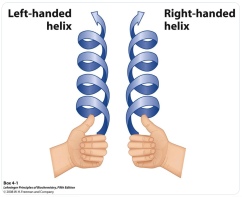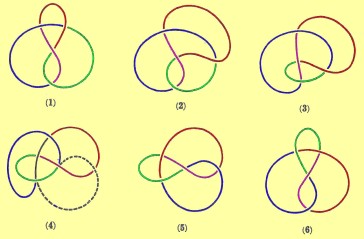An object is chiral if it differs from its mirror image. The favourite example is a hand: our right hands are reflections of our left ones. The two hands cannot be superimposed. The term chiral comes from , Greek for hand. If chirality is absent, we have an achiral object.
According to Wikipedia, it was William Thomson, aka Lord Kelvin, who wrote:
“I call any geometrical figure, or group of points, ‘chiral‘, and say that it has chirality if its image in a plane mirror … cannot be brought to coincide with itself.”

Chirality is important in many sciences, most notably in chemistry. In mathematics, chirality is the property of a curve, surface or solid such that it is not identical to its mirror image. The term is found in topology and, in particular, in knot theory.
A helix may be left-handed or right-handed (see Figure). The DNA molecule is formed of right-handed helices, although it is not uncommon to see diagrams that use the left-handed versions. There are also left-handed and right-handed versions of the Möbius band.
Chiral and Achiral Knots
A knot is achiral if it can be continuously deformed into its mirror image. The unknot and the figure-of-eight knot are achiral. The unknot is essentially a continuously distorted circle (technically, via an ambient isotopy).

The Figure above illustrates how a figure-of-eight knot can be continuously transformed into its mirror image, demonstrating that it is achiral.
The trefoil knot is chiral: there are left-handed and right-handed trefoils (see Figure below) and it is impossible to transform one into another by a continuous deformation.

Imagine a bug confined to move within a thin flexible pipe closed by joining its ends. Assume that the pipe is in deep space. The bug can measure speed and acceleration; this is its only source of data.
Can the bug deduce the shape of the pipe and determine whether or not it is knotted? Comments to thatsmaths@gmail.com (Subject: Bug in pipe), preferably before the end of November 2021.
=================================================
That’s Maths II: A Ton of Wonders
by Peter Lynch
BARGIN: 40% OFF FOR NOVEMBER ONLY
€11.68 IF ORDERED DIRECT FROM LULU PRESS
GREAT CHRISTMAS GIFT!
>> Review in The Irish Times <<
=================================================

